Michelin built its name on tires that ride on a cushion of air. But the top tire-maker in the world sees the future as completely airless.
“We are convinced at Michelin that airless is the future technology that is necessary for many reasons,” Cyrille Roget, the company’s director of scientific and technical communications, said to Green Car Reports at a recent event that emphasized sustainability and EVs.
One of those reasons, he explained, is that globally about 20% of tires are taken out of service prematurely due to sidewall damage or a puncture. With around 1.6 billion tires annually reaching the end of their service life each year, that adds up to about 320 million tires annually “that potentially could have been saved by airless technology,” Roget said.
“It’s a technology that really is useful in our approach of sustainability, because it saves material and it saves time,” he explained. And with less material and less overall manufacturing time invested, it’s likely to wear a lower lifetime carbon footprint—an aspect that automakers are especially aware of with EVs.
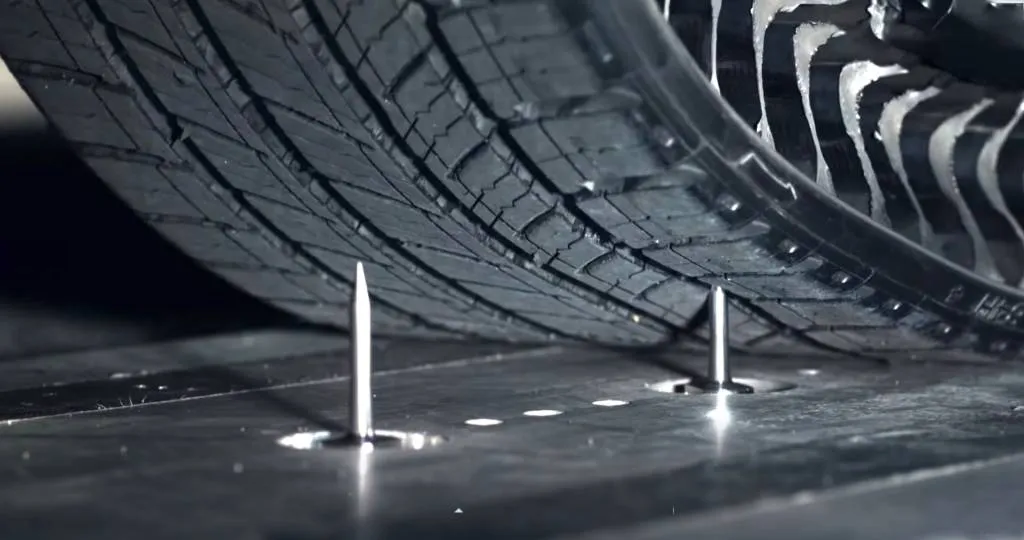
Michelin Uptis airless tires
No flats, no blowouts, no pressure checks
Michelin’s prototype airless tire line, Uptis (Unique Puncture-proof Tire System), may have been conceived to have less impact on the environment, but as the name origin suggests it has other big advantages. Although the tires weigh slightly more than standard air-filled tires, vehicles don’t need to be equipped with spares, jacks, repair kits, or tire-pressure sensors. From a safety standpoint, it avoids flats and blowouts and assures consistency in ride and handling in a way that air-filled tires might not.
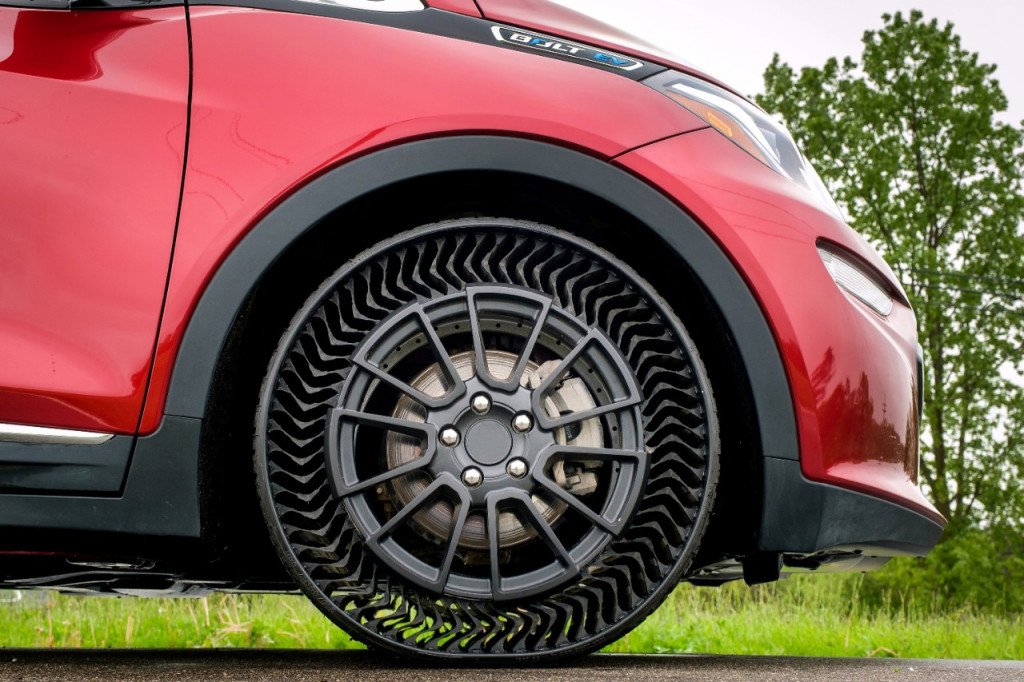
GM, Michelin Uptis airless tire prototype
As Michelin has outlined before, it thinks airless is a perfect fit for EVs and their greater curb weights, as well as autonomous vehicles, ride-hailing, or other technology or services that need to be up and running all the time.
At one point it looked like airless tires might be ready for the road surprisingly soon. In 2019, with the introduction of Uptis, Michelin and GM announced that the automaker would be testing it on the Chevy Bolt EV. GM was bullish on its Cruise autonomous-vehicle unit at that time, and it was suggested by the companies that original-equipment airless tires might debut on a 2024 GM EV. Neither company has responded to Green Car Reports with takeaways of that test.
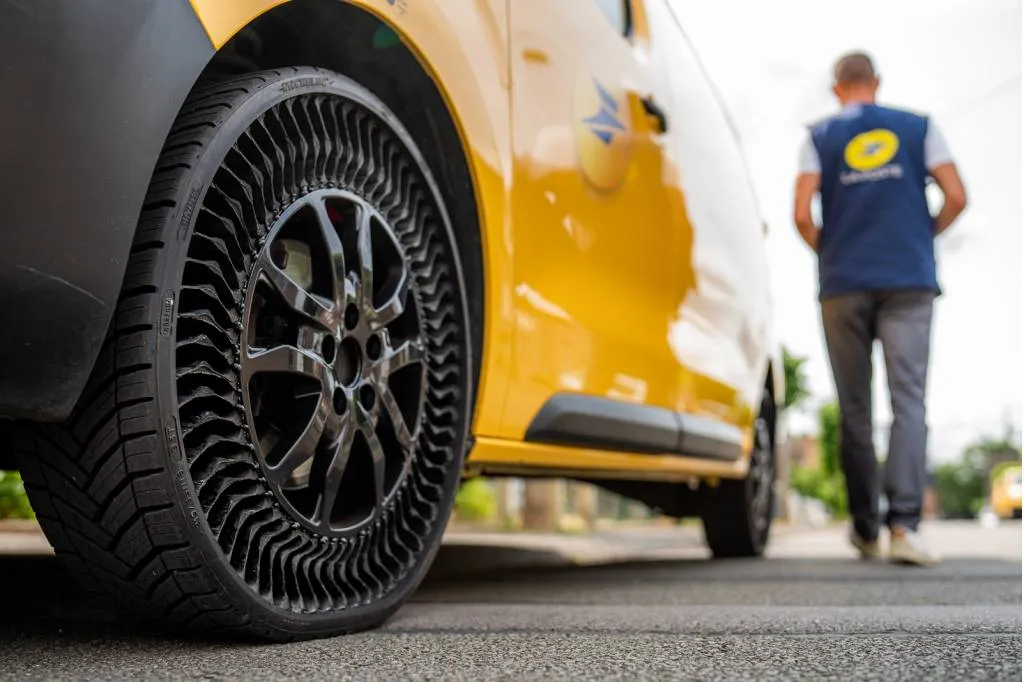
Michelin Uptis airless tire on French postal van
Tests in delivery fleets, talks with Tesla
But more tests continue on this tech, which the company describes as being at the prototype stage. In 2023, Michelin announced Uptis real-world trials with both DHL Express in Singapore, and with La Poste, the French postal service. They’re fitting about 50 vehicles in each of those fleets with Uptis tires, Roget explained, and the idea will be to capture as much data as possible.
Michelin needs all that data, because despite its more than 130 years making pneumatic tires, airless tires bring new challenges.
“Airless technology is completely new in terms of design, in terms of production, in terms of homologation, so we have to learn everything,” Roget summed. “And that’s why we have those two years that we will test with DHL and Le Poste to the end of 2025.”
At that same time Michelin confirmed it has been in talks with Tesla about testing Uptis. So along with wireless EV charging, it might be another ideal hands-off technology fit for future Tesla Robotaxis.
Roget notes that Uptis remains in prototype form and technically isn’t homologated for on-the-road use, but Michelin has an exception to be able to place them in test use.
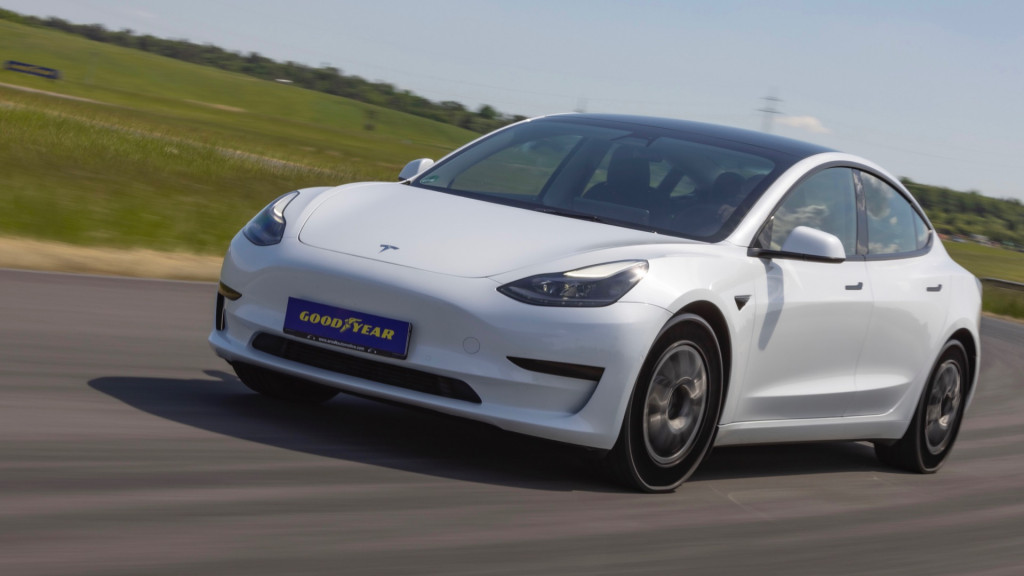
Tesla Model 3 with prototype Goodyear airless tires
There have been other attempts at airless tire designs. Hankook and Bridgestone are among the several others that have presented airless tire concepts, and Goodyear has a prototype. Toyota and the tire maker Sumitomo debuted weight-saving airless tires combined with in-wheel motors in a 2017 concept, noting then that it needed to make progress in cutting rolling resistance, which was still higher than inflated designs at the time. Then it showed what appeared to be an evolution of the tires in its 2023 Lunar Cruiser EV concept.
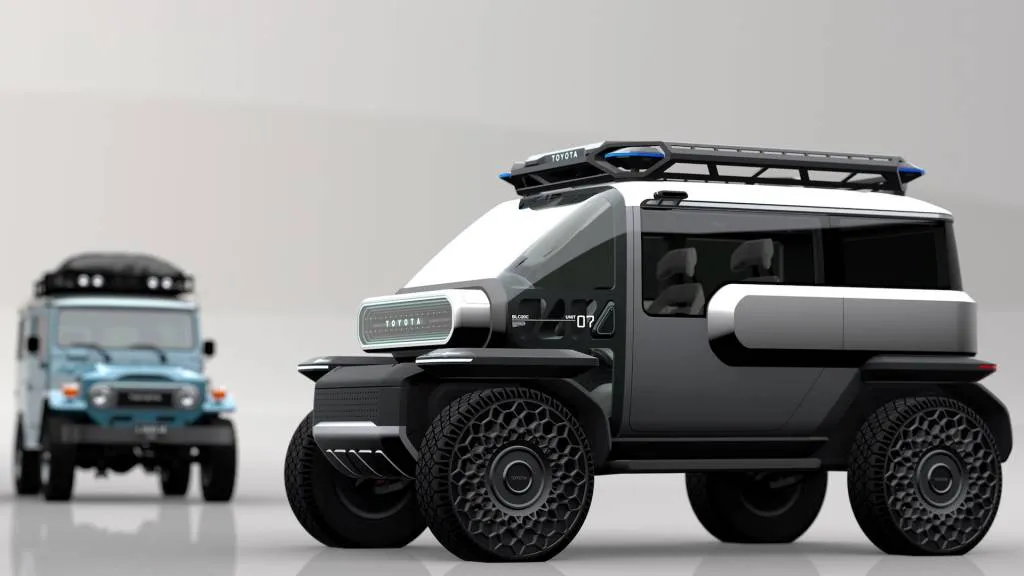
Toyota Baby Lunar Cruiser concept
But Michelin boasts that it’s the “only manufacturer in the world to run an airless tire on open roads under real-world conditions as part of commercial contracts.” The company also says the tires are “currently fitted on a fleet of vehicles in Las Vegas and Thailand” with clients the company isn’t disclosing.
In the meantime, Michelin has worked on a new material within the tires, incorporating fiberglass, that can reach a level of performance very close to other modern tires. The tech has been tested internally at Michelin and has covered more than two million miles, according to the company—and, as an executive said last year, at up to 130 mph with police use in mind.
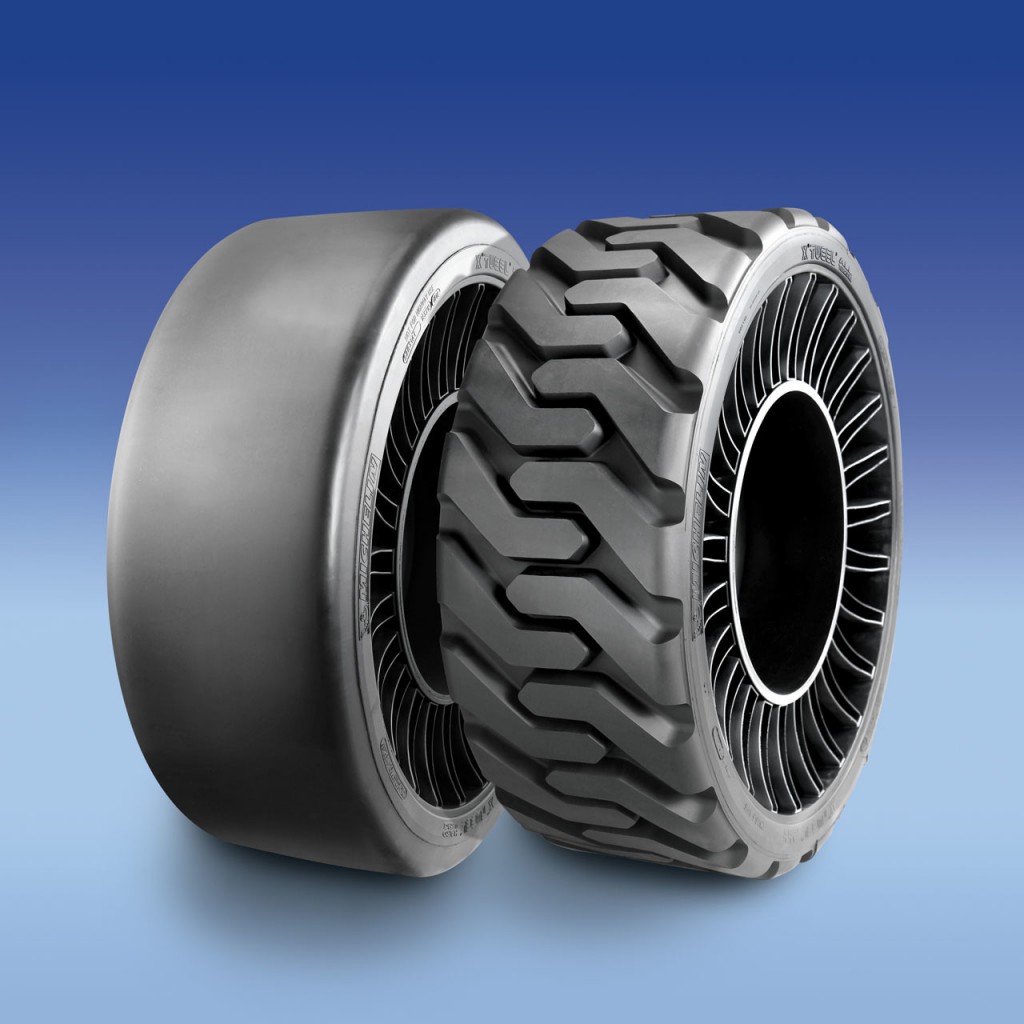
Michelin tweel
Building on Tweel
Uptis isn’t Michelin’s first or only airless technology. It introduced Tweel (tire plus wheel) as a concept in 2005 and made it commercially available for specific low-speed applications starting in 2012, and they’re now used in a range of things from riding mowers to industrial equipment.
Michelin’s South Carolina facility was the first facility in the world to build Tweel, and the concept was born in the company’s Greenville research center, so it’s fitting that location hosts both global development of airless tires and production of the pilot-production tires to be tested.

Michelin Uptis airless prototype tires
While airless might not be prevalent for decades, Michelin is also working on a number of other more sustainable solutions, especially for EVs that wear through tires much quicker. One of those is greener, EV-specific tires with greatly increased sustainable materials—42% or more in a prototype recently presented and due by 2025. It’s also hoping to revive the popularity of retreads with a reboot of the tech for trucks, allowing up to five retreads while reusing the tires’ carbon-intensive structure.
Whether with Uptis, Tweel, retreads, or sustainable-material tires, these solutions all make smarter use of the materials and processes needed to make these wearable items we rely on every day. And that’s certainly not just hot air.

